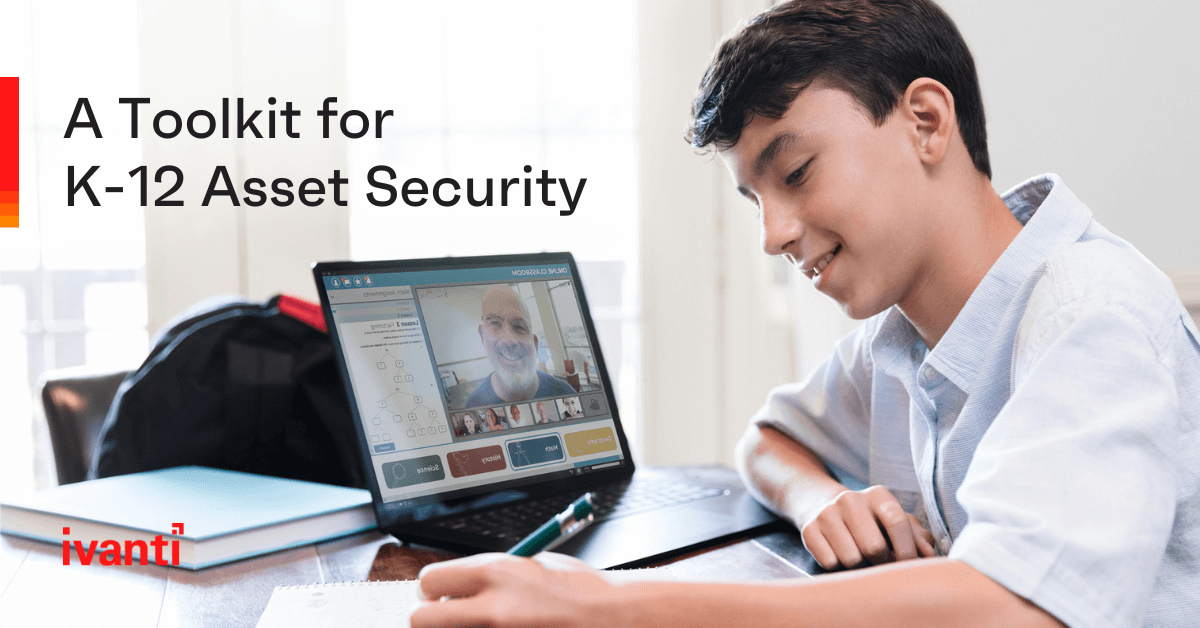A Toolkit for K-12 Asset Security
If you’re responsible for implementing or supporting the digital infrastructure for a K-12 school or school district, no one needs to tell you how much things have changed in recent years. Unlike most, you had the advantage of knowing that the change was on its way. You may have even spent a fair amount of time helping others – district leadership, administrators, educators – prepare for the coming shift.
The script typically went something like this:
Digital technologies are going to fundamentally transform K-12 education. Right now, we’re in the early stages of augmenting traditional learning models with digital devices and systems. But someday soon we will see not only the classroom, but the school itself, go digital.
And then, sooner than most of us would ever have predicted, “someday” arrived. In the wake of the COVID pandemic, the overnight shift to digital learning models ushered in the age of both the digital classroom and the digital school…just as predicted! And, just as predicted, this rapid shift opened up a whole new world of possibilities for K-12 schools and districts. For the first time, we saw what widespread distribution of iPads or Chromebooks could do to support a full-time learning environment and how tools like Google Hangouts could enable a new kind of distributed classroom experience.
But with those new possibilities came new security vulnerabilities and an unprecedented level of risk. The school itself has, in fact, gone digital, at least some of the time. Today, educators and students alike are working in a hybrid environment where the digital classroom meets the real-world classroom. Managing such a learning environment means managing a wide array – and growing number – of devices and applications. As technology has grown more central to the educational experience, bad actors have increasingly targeted schools with an expanding array of ever-more sophisticated cyber-attacks.
Consider these sobering statistics:
- Microsoft’s threat analysis data indicates that education is the number one sector targeted for attack, with attacks against schools reflecting up to 83% of all recorded cyberattacks.
- The Multi-State Information Sharing and Analysis Center (MS-ISAC) reports that 57% of ransomware incidents involve K-12 schools.
- The Center for Internet Security predicted an 86% rise in K-12 cyberattacks for the 2021-22 school year.
In light of these challenges, many districts are adopting a new strategy to secure their environments and create a better learning experience. This three-pronged approach includes investing in an IT asset management solution, updating IT policies and procedures and training IT managers, educators, and school staff in implementing new policies and tools to ensure cyber security while delivering an improved educational experience.
Invest in an asset management solution
Addressing the challenges that schools face today requires implementing a secure technology to ensure school administration can track, manage, and secure devices at all times. An IT asset management (ITAM) solution can enable educators and administrators to manage all applications and devices from purchase to disposal. This includes the ability to track asset availability and performance, ensure that devices are accounted for and updated with the most recent security software, and manage both hardware and software contracts, licenses, and warranties. Schools benefit from asset management options such as support of barcode scanning of devices, for faster inventory and status updates, as well as the ability to maintain and update a product catalog to facilitate ongoing asset management.
Policies and procedures
On its own, a new ITAM solution can make a tremendous difference in assuring the smooth and secure operation of the hybrid learning environment. But the real change must come at a fundamental level concerning how schools and districts manage their IT assets. Schools must develop standard rules of engagement and sign off procedures for educators, staff, students and parents. At the simplest level, effective practices for tagging, scanning, and checking devices in and out can make a huge difference in avoiding loss and risking a security breach. Such rules become even more effective when guided by policies aimed at managing license and device spend over time and when supported by tools that provide real-time insights into the current asset situation and that recommend or automate resolutions to problems.
Training
Like everything else that occurs within an educational setting, success in managing and securing the devices and applications that support a K-12 environment comes down to people. The ITAM system and new policy guidelines can succeed only if you equip IT Staff, Teachers, administrative staff, and students with the know-how they need to keep devices and systems in place and secure. This requires basic training on the ITAM system for those using it directly, and related equipment such as barcode scanners for teachers and other staff members who will be entering data into the system. The key is to simplify the user experience from the outset so each of these players will easily incorporate the new policies and practices into what they do.
Learn more about how K-12 schools and districts can address the challenges of the digital classroom by reading our white paper, Expand Visibility, See Clearly, Act Decisively: Better IT Insights for Better Educational Outcomes. Learn how Ivanti can help your school or district implement its own toolkit for the digital age by scheduling a chat with one of our representatives today.

